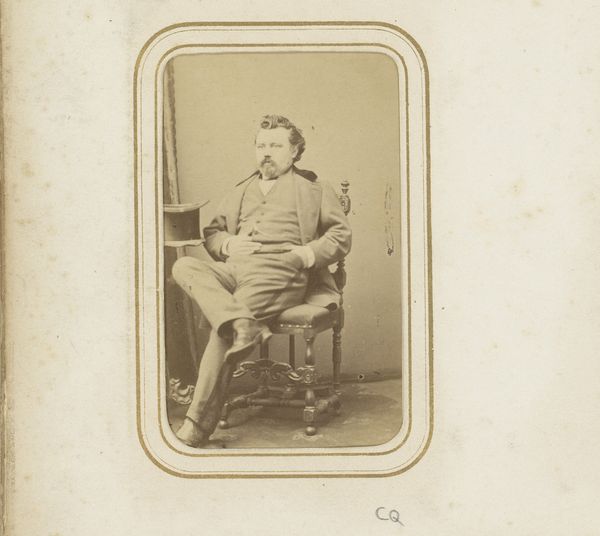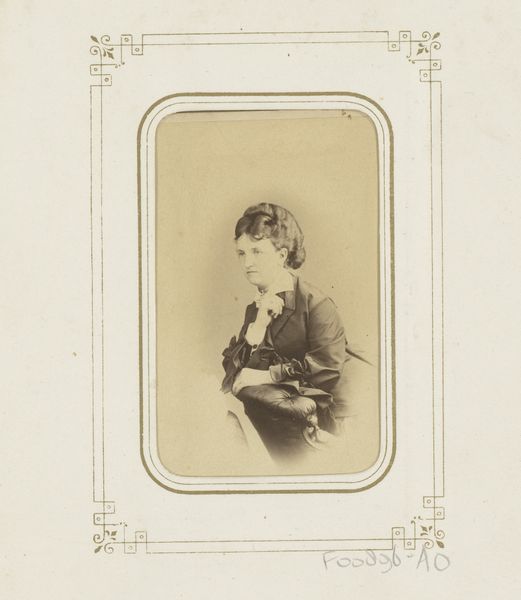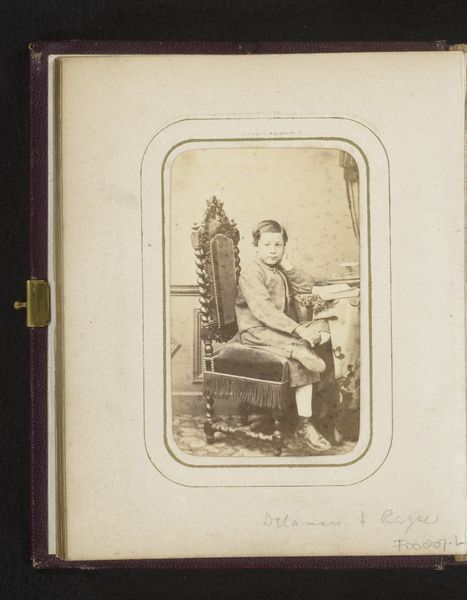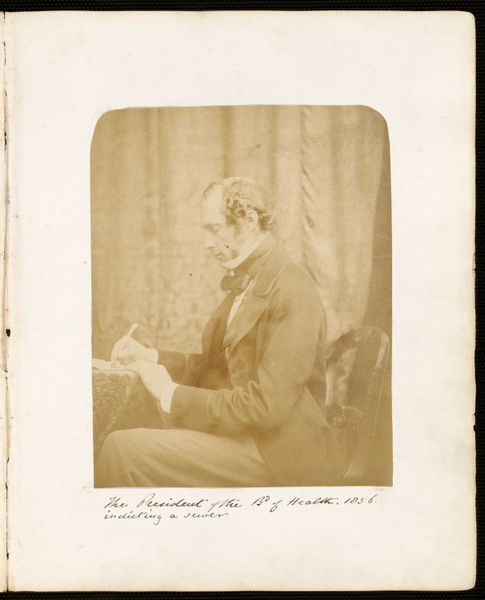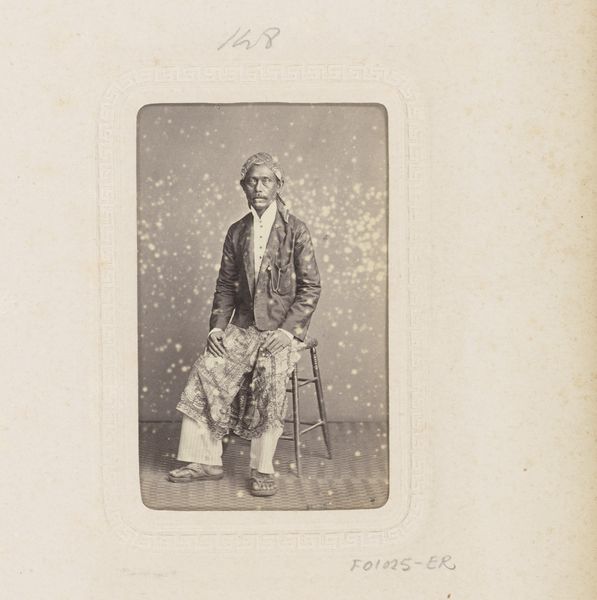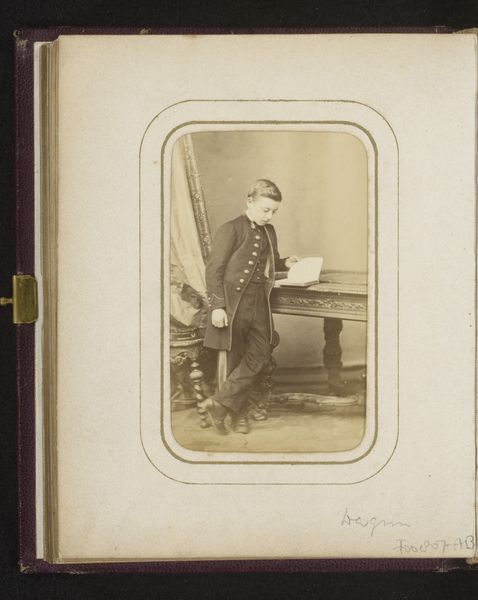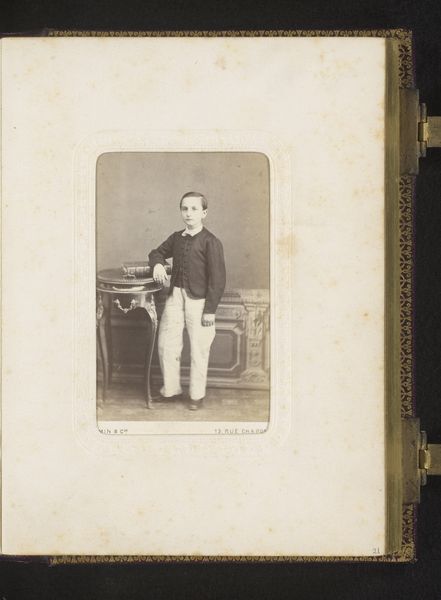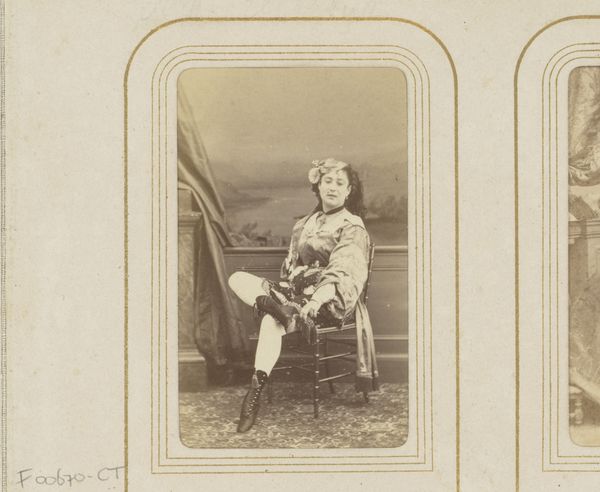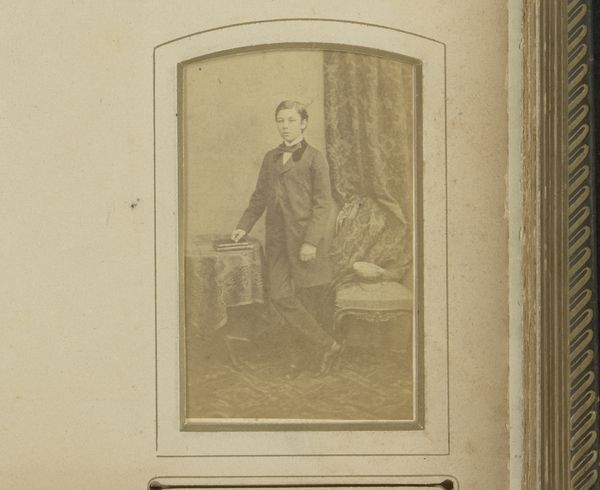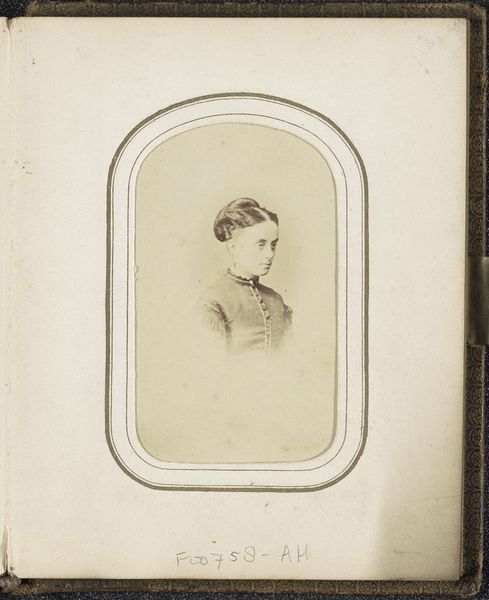
photography, gelatin-silver-print
#
portrait
#
photography
#
historical photography
#
gelatin-silver-print
#
academic-art
Dimensions: height 105 mm, width 62 mm
Copyright: Rijks Museum: Open Domain
Editor: So this photograph, “Portret van een jongen met een hoed op schoot,” by Charles Thomas Newcombe, dates from between 1862 and 1865. It's a gelatin silver print, and the little boy looks so solemn. What kind of story do you think it’s trying to tell? Art Historian: It’s a formal, staged image, typical of portrait photography of that era. Consider the hat resting on his lap - what could that symbolize? Editor: Maybe a symbol of class or status? Like, he's from a family of means? Art Historian: Precisely. Clothing and accessories were consciously used to project an image. Think of other symbolic elements: the ornate chair, the backdrop. They construct a narrative of belonging and aspiration. Notice the gaze…does he meet your eye? Editor: Not really, it’s like he's looking slightly away. Maybe he doesn’t want to be here. Was this a common look for the time? Art Historian: The averted gaze adds to the impression. This connects with a wider visual language of photography at this time. The photograph captures not only the boy but also, aspirationally, a social ideal. What emotions do these calculated symbols and expressions evoke in you? Editor: I see what you mean! I get how photography could shape stories back then and I can see the signs now that it has been staged! Thanks for your expertise! Art Historian: My pleasure! Each element plays a role in the cultural memory, creating an ideal. Analyzing images gives insights into understanding the culture behind the art.
Comments
No comments
Be the first to comment and join the conversation on the ultimate creative platform.
